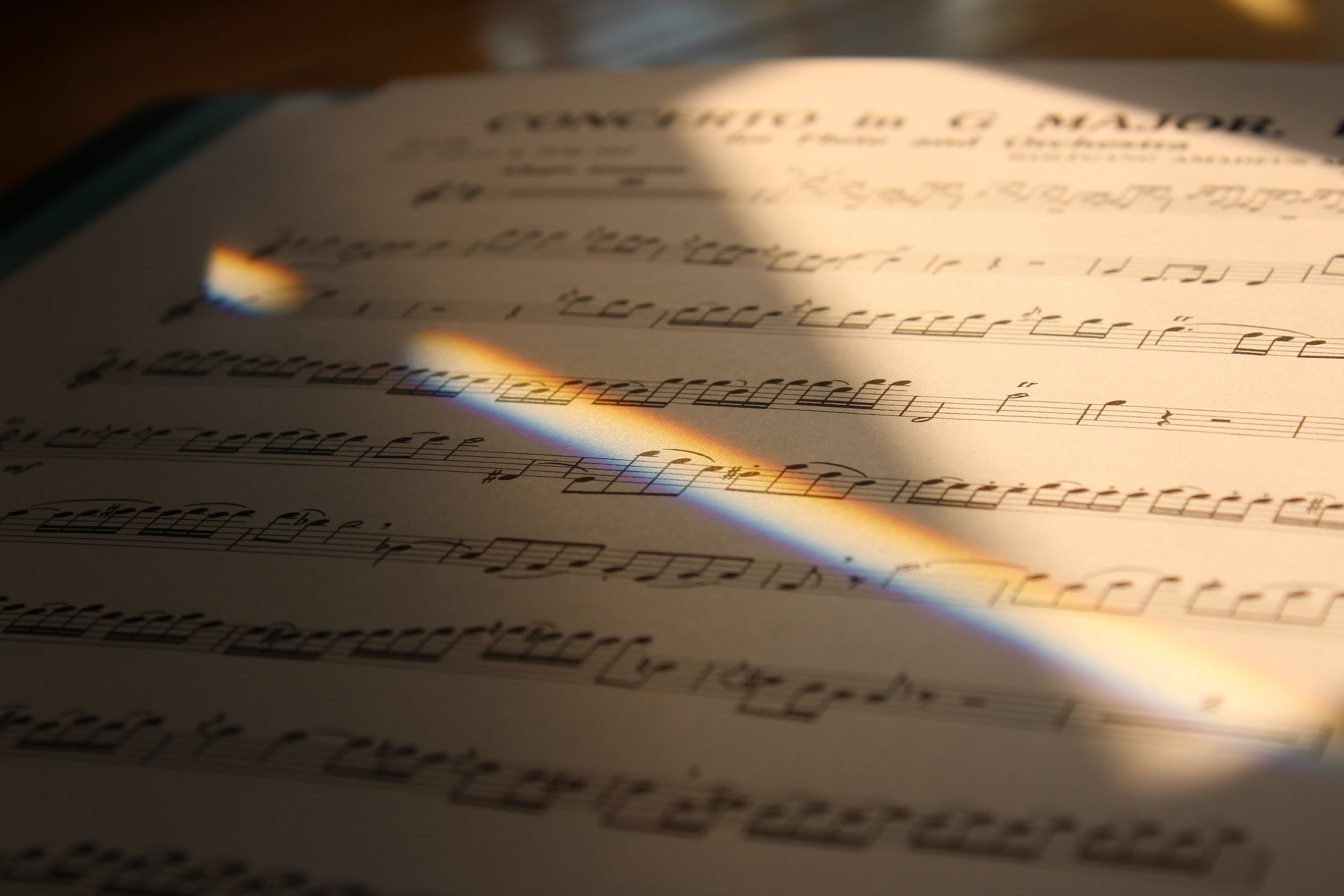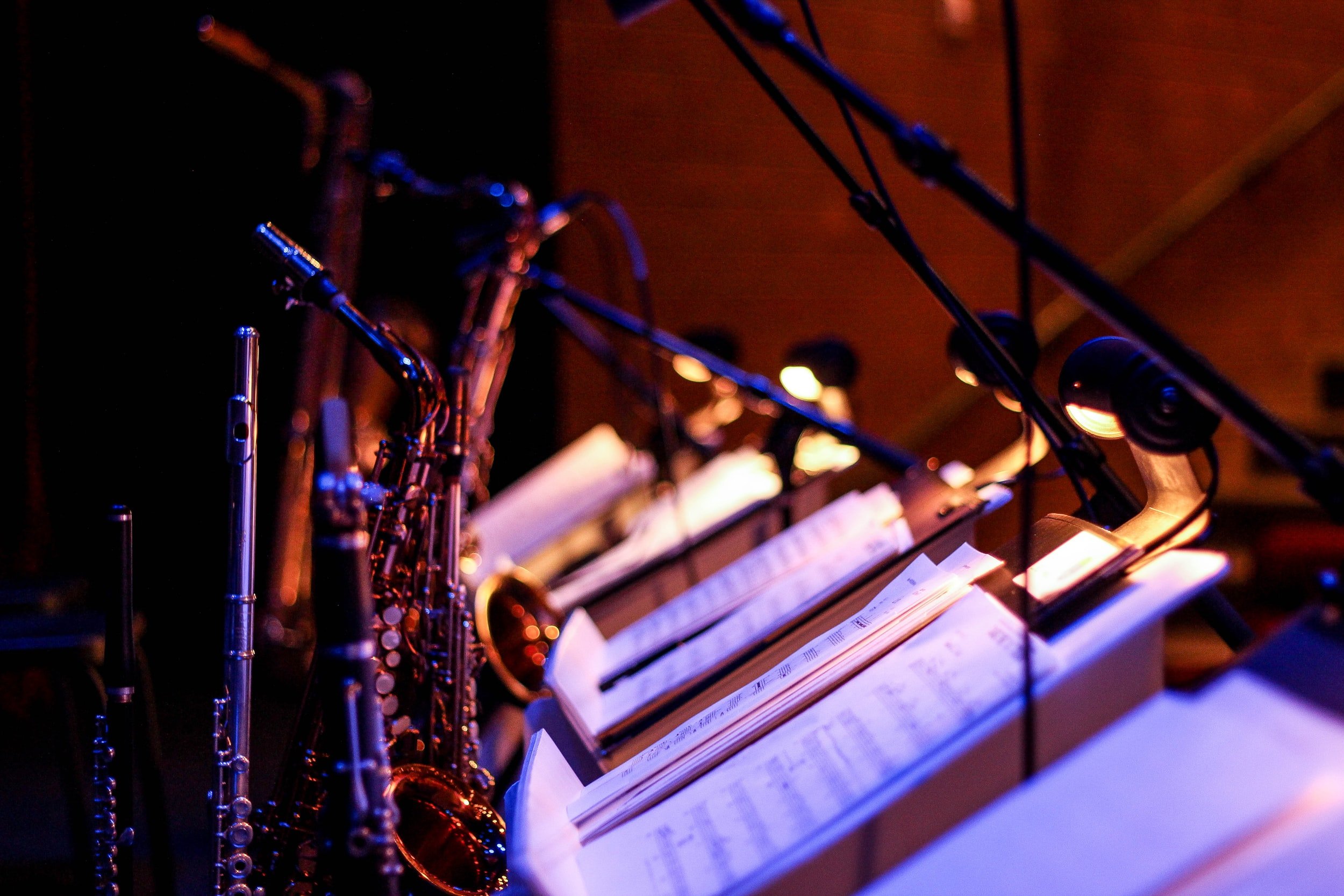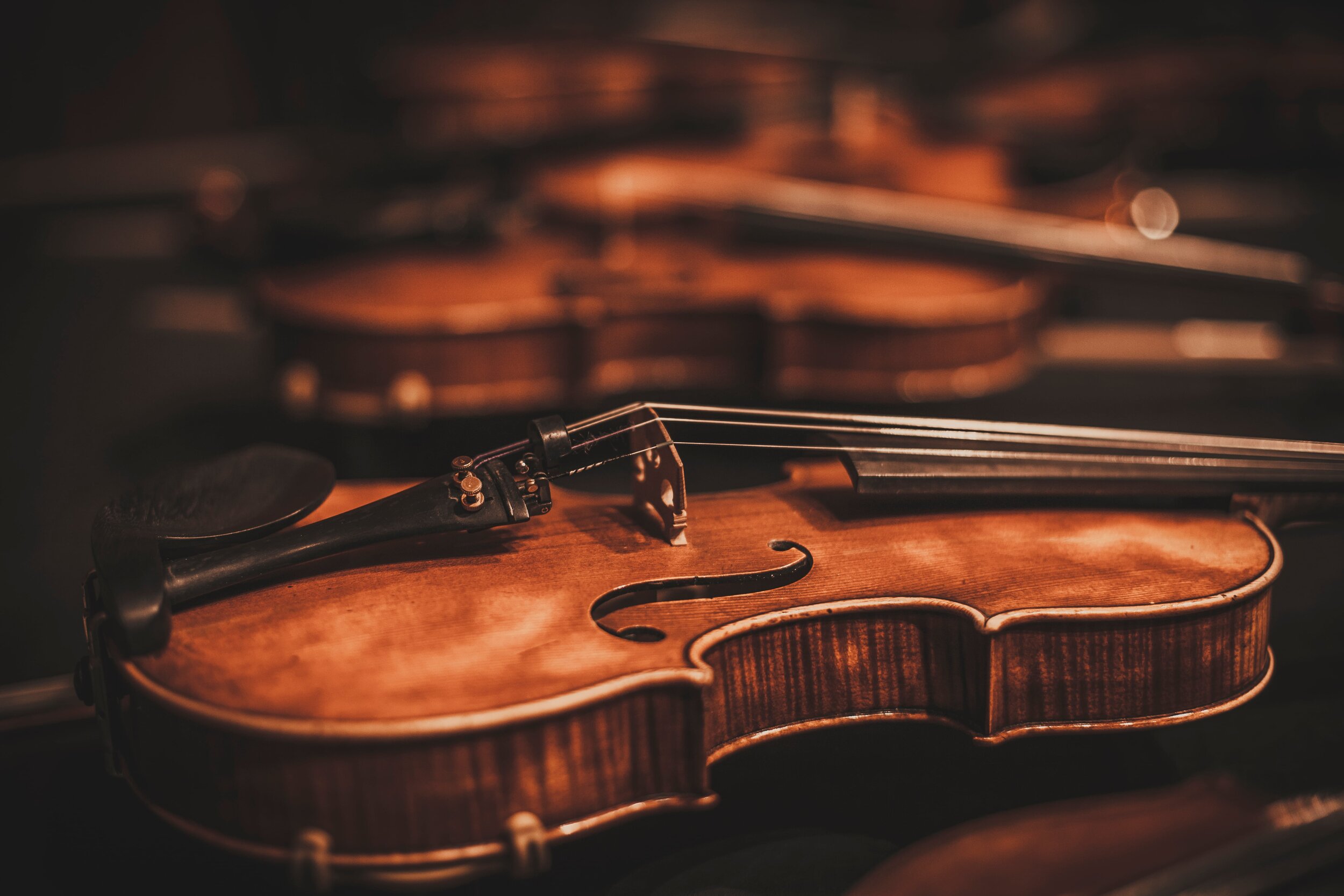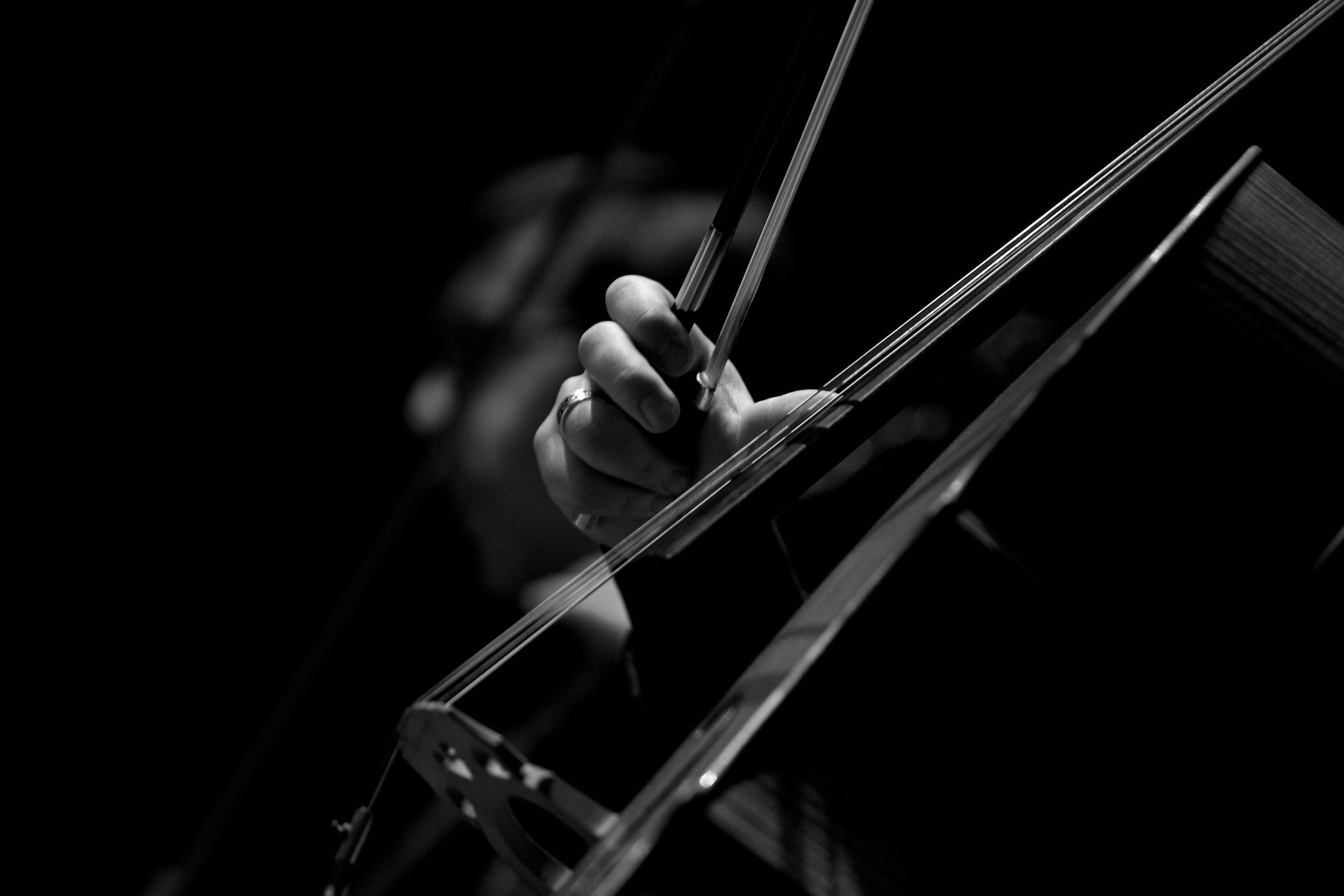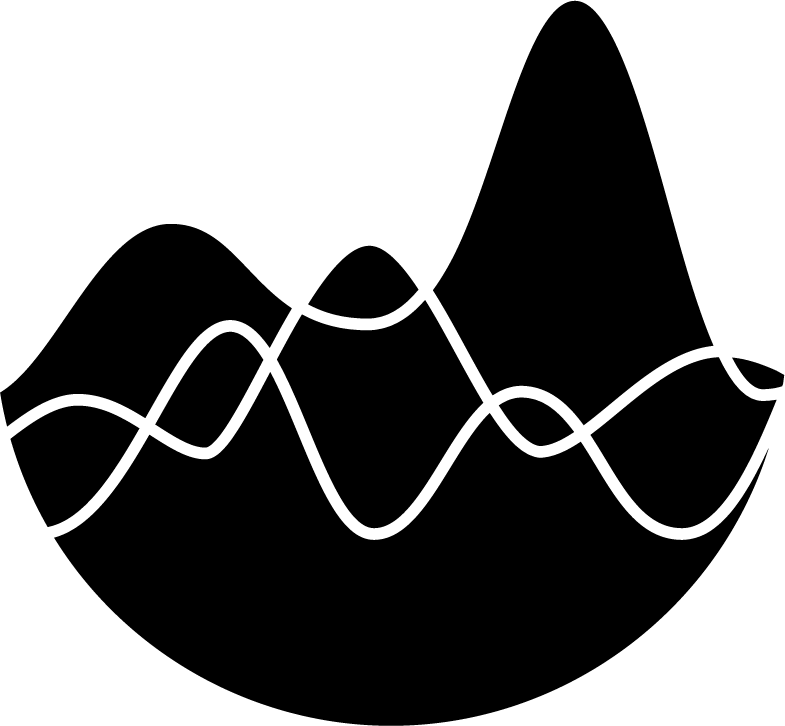Keyboard | Piano Essentials
Keyboard | Piano Essentials
Extreme Orchestration
by Don Freund and David CutlerPublished: February 2024
Piano
Other Auxiliaries: Upright piano, and spinet piano, toy piano, tack piano, fortepiano (historical)
THE CONCERT GRAND PIANO.
The piano is a percussion mechanism masquerading as a sustaining, lyric instrument. Considering the tremendous amount of music written for it, thoroughly convincing in all manner of styles and characters, this masquerade is conspicuously successful. The instrument is so famously sensitive and personal it is counter-intuitive to consider the fact that the performer actually has no direct contact with the strings or the hammers that strike them at the time the tone is produced. Felt hammers are thrown freely at the strings by the keyboard mechanism; the only thing the performer can control is the velocity at which the hammers are launched, and how long the resulting tone is allowed to ring. Miraculously, the tone’s decay throughout the lower two-thirds of the instrument’s range is so unnaturally slow that the percussive aspect of tone production is effectively suppressed at dynamic levels below ff. The sensitivity of a well-regulated action can translate the slightest variables of the performer’s touch into distinctly perceptible color modulations.
Fig. 1: The speed of the decay of a piano tone in relationship to dynamic level of attack.
The piano tone in the lower and middle registers decays very rapidly at louder dynamic levels; the decay is slower and slower as the dynamic level decreases. As a result, the dynamic level at which any note is played is directly proportional to the degree of accent heard in the note’s dynamic envelope. The long decay of the piano’s tone makes control of a note’s duration far more significant than on any other percussion instrument. A set of dampers, one for each pitch, rests on the strings; each damper is raised by depressing the key (in tandem with the launching of the hammer), and is dropped on the string as the key is released. The strings of the top octave and a half or so do not have dampers; the top damper note on small grands is usually Eb6; on concert grands, dampers may run up to G6. The piano’s dampers are very effective, so it is possible to play a sharp staccato, even on the heaviest low strings. The efficiency of the dampers, along with the piano’s slow decay, makes subtle shadings of articulations a very expressive colour resource for the piano, a resource which is all too often lost due to overuse of the damper pedal.
The entire assemblage of dampers can be raised as a unit by the rightmost pedal, the damper pedal. (Avoid the confusing term “sustaining pedal.”) The single word “pedal” used without a modifier always means the “damper pedal” in piano terminology. This raising of the dampers not only allows played notes to ring indefinitely, but also allows all the strings of the instrument to ring in sympathetic vibration with the struck strings, adding reinforcement and ambience to the sound. Unlike the una corda pedal, the damper pedal can be used in differing degrees of engagement (the term “half-pedal” actually covers a wide range of possibilities), and extremely subtle timings of its engagement and release (both when it is depressed or released, and how long it is depressed or released) can have a telling impact on the texture and sonority. For a composer, attempting to indicate this subtlety can be a notational nightmare. Pedaling instructions are best given in broad strokes (for example, “no pedal,” “with some pedal,” “discreet pedal for legato only,” “drenched with pedal”). Players will naturally add pedal if pedaling is not marked. Sporadic specific indications can be used without necessitating that level of detail for the entire work, but the return to less precise pedal indications should be indicated by some broad term, such as “pedal simile” or one of those given above. Notating the duration of pedaled notes with longer note values, actual ties, or open-ended ties will hopelessly clutter a score if used consistently, but these are occasionally warranted as courtesy markings. There are several accepted ways of marking specific damper pedaling; we recommend the one given in this example.
The middle pedal, best identified as the sostenuto pedal, is reliably present on most grand pianos in North America, and is becoming more prevalent overseas. This is a wonderfully useful device, not always well understood by pianists and composers. The sostenuto pedal controls a lever that grabs and holds in a raised position only those dampers that are raised from the strings at the time the sostenuto pedal is depressed. (These dampers may be raised by the natural process of playing and holding a note, a series of notes, or a chord, or by depressing the keys silently to prepare for the sostenuto pedal.) These pitches will sustain through their natural decay, or ring freely if struck for as long as the sostenuto pedal is depressed. At the same time, all the other pitches on the instrument may be played with their durations controlled by their dampers or the damper pedal (the dampers selected by the sostenuto pedal will remain independently raised as the damper pedal is raised and lowered). Obviously, depressing the sostenuto while damper pedal is depressed simply duplicates the damper pedal, so a moment must be chosen for invoking the sostenuto pedal when the damper pedal is up. The sostenuto pedal is most commonly used to sustain a pedal tone or pedal harmony through pedal changes or an otherwise dry texture. For example:
The sostenuto pedal may also be used to assist legato playing without unwanted sympathetic resonance that might arise from use of the damper pedal, or to create the distinctive bell-like articulation color fabricated by the sympathetic vibrations of low strings in a cluster sustained by the sostenuto pedal, reverberating staccato notes played in a higher range. (This effect can also be evoked by holding a low silent cluster or chord with the left hand while playing with the right, but the sostenuto pedal allows the left hand to be free to take part in the higher texture.)
Most of the piano pitches, from around C3 upward, are created when one hammer strikes three strings tuned in unison (“triple-strung”). Pitches from around G1 to C3 are double-strung, and the bottom 10 pitches or so are created by single wound strings. On all grand pianos, the leftmost pedal, called the una corda pedal (Italian for “one string,” which is somewhat inaccurate), slightly shifts the keyboard and hammers to the right, so that the only two of the triple-strung strings are struck, while the double-strung and wound strings are struck a bit off-center; the result is a slight but perceptible change in color, and softens the sounds as much as one dynamic level. The use of the una corda (this term is recommended as more direct than “the soft pedal”) is indicated by writing u.c. below the bottom staff, and it is cancelled by writing t.c. (“tre corde” — three strings, also somewhat inaccurate). Some composers have asked for gradually depressing and releasing this pedal, but the effect is inconsistent, and it is best to consider this pedal an “on/off” toggle.
The larger the piano, the longer the bass strings, making these deeper, richer, and long-lived. A low cluster played ff on a 9-foot concert grand can last as long as a minute. With the exception of the bottom 5th or so (which can be noisily growly on most pianos), a convincing singing tone can be expected up to C6. In the top octave, the decay is more rapid than the same notes on a glockenspiel, and it takes great force to produce a real ff. In this range hammered repeated notes can allow the sound to accumulate to a dynamic level much louder than any single note or chord could produce; to a lesser degree this phenomenon is true (with the damper pedal down) in any range of the piano. Given enough time to prepare, it is possible to play very softly – at the threshold of audibility – anywhere on the piano, although the extremes are difficult to control. Since the dynamics of the piano are “velocity sensitive,” fast music is difficult to play softly. If an enormous sound is desired, moderately fast crashing chords or tremolo chords with two hands in alteration is extremely efficient.
Excerpts from Piano Solo Literature: Examples of “Sound Analysis.”
The best way to develop a distinctive creative facility in writing for piano is to examine some of the wealth of solo piano literature from the standpoint of sound itself, something musicians frequently overlook while analyzing the harmonic, melodic, and structural aspects of piano music. It is useful to bear in mind the physical motions that go into producing various kinds of piano gestures. The pianist is basically a system of fulcrums and levers. Larger levers are used in producing the bigger, slower musical events, while successively smaller levers articulate the faster surface events. Here, from largest to smallest, are the fulcrums and levers whose work can be combined in a myriad of ways:
Seat is the fulcrum; torso is the lever, used to create big sounds and shape large phrases, and to lean far right or left.
Shoulder is the fulcrum, arm is the lever, also used for big sounds, and left/right movement. Elbow is the fulcrum, forearm is the lever, used for moderate dynamic levels and speeds (8th notes at quarter= ca.100). Rotating (“radial”) motion also comes from the elbow, particularly useful in trills and tremolos.
Wrist is the fulcrum, hand is the lever, capable of producing crisp, sharp articulation of 16th notes at speeds of up to quarter= ca.100.
Knuckle is the fulcrum, finger is the lever, used for the fastest notes and detailed articulations. Dynamic range limited to ƒ or less at high speeds.
From the hundreds of composers and thousands of piano works that might be studied, we have chosen two examples from the solo piano music of Beethoven and Debussy that provide illuminating and dramatically contrasting piano “sound analysis” considerations.
Beethoven, Sonata in c minor, Op. 13, “Pathetique”
Beethoven’s opening chord is exceptionally heavy and dark, with notes closely packed in a low range, inviting the pianist to expend the combined weight of torso and arm. It would be possible to create an acoustically literal ƒp by playing the chord short and engaging the pedal immediately afterwards, but that kind of trickery is foreign to this style. The ƒp is a psychological effect, created by the contrasting lightness of the ensuing thinner-voiced chords, whose dotted rhythms are articulated from the wrist. The music moves higher and higher, but Beethoven saves the actual crescendo for a brief moment in m. 4, where after a re-thickening to a staccato 6-voice chord, all the drama is focused into a single note, a laserpoint of sound far more effective than a chord or an octave would have been. The rest under this note provides the quality of open space that makes this moment particularly incisive, especially as it is followed by the low octave Bb’s, spreading the sparse acoustic vista over 4 octaves.
Measure 5 and 6 employ octaves not to add volume but to color the p melody that sounds comparatively spacious over the close-voiced throbbing chords pulsed by the left forearm. The last beat of these measures inverts the texture: suddenly ff chords are in the right hand, octaves in the left. The contrast of the layers presented in m. 5 becomes more pronounced as the voices diverge in m. 7-8. Perhaps the most compelling sound of this introduction is created by the rests in m. 9-10, exposing the fragile tenderness of the p high range and allowing the cascading chromatic scale to make an uncluttered impact.
The Allegro derives it energy from the octave tremolo figure of the left hand; note that the right hand quarter notes (played from the wrist) are dyads, while the half-note forearm strokes are three and fournote chords.
Measure 27 introduces a new textural relationship: right hand forearm octave jabs against p repeated wrist dyads in the left. Arpeggios covering more than an octave like the one in m. 29 are not naturally easy, but pianists practice this technique regularly. It should be mentioned that 4-note chord arpeggios are significantly easier than triad arpeggios, which require the pianist to cover more ground with bigger skips in less time.
The hand crossing in measure 51f. allows to right hand to have an antiphonal dialogue with itself. These skips are a bit treacherous, but the passage is made easier by three factors: the left hand is very simple; there is always at least a measure between skips to regain poise; and the skips are always to black notes, which are much easier to find in a hurry than white notes since they “stick out” from the keyboard. In cross hand passages the traveling hand generally goes over the stationary hand (“sopra” may be used to indicate “over”; “sotto” indicates “under”).
The passage at m. 89 is an exceptionally effective example of physical mirror writing using radial rotation of the wrist from the elbow. The octave interval allows the radial motions to be used most efficiently (in piano technique, large interval tremolos are more ergonomic than trills). Each hand position spans no more than an octave, avoiding large skips. The articulation of the outer notes (first sustained, then staccato) gives the impression of 4 textural layers.
Measure 149 displays an inversion of the texture of the beginning of the Allegro, but two-note slurs in the left hand replace the wrist staccatos. We suspect that Beethoven may have been induced into using these 2-note slurs by the predominant black-key-to-white-key pattern that physically suggests this phrasing.
This ghostly pp coupling of a rumbling octave tremolo and mysterious rolling broken chords creates an evocatively anxious retransitional color. Note that rests are omitted from the top staff to indicate that the right hand is playing in the bottom staff.
These opening 13 bars of the slow movement begin with a typical three-layered keyboard texture: melody, bass and flowing inner voice. Although only one dynamic is printed (and apparently Beethoven did not even provide that), it can be assumed that the pianist will play the melody slightly louder and suppress the inner voice. The inner voice is notated in lower staff because it fits the bass clef, but pianists instinctively play it with the right hand. The four-voice texture beginning at measure 9 resembles the texture we examined at m. 89 of the first movement, but here the slower tempo and singing outer voices create a completely different sound. Beethoven provides a few ergonomic/sonic touches: At the end of measure 7 the repeated notes of the middle voice match the forearm portamento of the melody; the finger staccato arpeggio in measure 8 briefly clears the air; and in measures 12-13 a surging cello-like line replaces the left hand’s mirroring texture.
Debussy: Preludes, Book I, No.7: Ce qu’a vu le vent d’Ouest
Debussy’s piano writing frequently uses the hands in tandem to create a single richly imagined layer of activity with a sparkling surface. Below, in measure 4, the waves of the arpeggio are divided idiomatically between the hands (as indicated by the cross-staff beaming). The left hand crosses over to superimpose glimmers — ergonomically friendly black-keys. Measures 6 and 7 use this superimposition to create a 5- octave wash, a dazzling accumulation of sound from a technically simple pattern. The crescendo is an essential component to this effect, provided in part by the lean of the pianist’s body into the highest notes.
The material of measures 7-9 is similarly a composite single layer, with the left hand’s tremolos adding a heterophonic shimmer. Here, too, the crescendo defines the sound quality as well as the shape. The grace-note arpeggio that rips the beginning of m. 10 is more of a noisy attack transient than a harmonic event, and the low trill is heard as its aftermath. Debussy uses the odd voicing inspired by the thumb’s ability to play seconds (note that they are either all-white or all-black) to give sonic mystery to the “plaintive and distant” right hand horn call of measures 11-12.
It may not have been surprising that there were no pedal markings in our Beethoven examples, but it is striking that Debussy provided no pedal indications in his score of this prelude; in fact there is only one pedal mark in the entire set of 24 Preludes. There is little doubt that Debussy intended for pedal to be used liberally and imaginatively, but composers whose sound-worlds are less familiar need to be a great deal more generous with pedal indications.
Debussy: Preludes, Book I, No.7: Ce qu’a vu le vent d’Ouest (What the West Wind Saw)
Score-following video
In measure 17, the hands cooperate to form each of the two superimposed layers. One layer is comprised of a line set in 4 octaves (this must be sustained by the pedal). Superimposed is another 2-handed layer, a rising chromatic line in octaves with the right hand providing the surface shimmer.
In measure 21-23, the hands are fused into planed 8-voice power chords; note how well the left hand voicing fits the shape of the natural finger spacing. The added surface material here is designed to be brilliant: the idiomatic flying octave Bb’s combine the power of the octave radial twisting with regularly spaced shoulder shifts, and the ease of landing on these protruding black keys allows the pianist a measure of reckless abandon. The left hand’s low F# octaves are similarly hard to miss. Finally, the c-d trill (“strident”) is divided between the hands (indicated by cross-staff beaming) so that powerful forearm strokes can be used instead of finger action.
Strengths and Limitations. The piano is an ideal “cover” for weak or missing voices in an amateur orchestra, and its use as a “continuo” filler is a role it inherited in its early years from its older relatives the organ and the harpsichord. In an advanced ensemble, however, extensive use of the piano as a doubling or filling instrument tends to dull the varied colors of the other instruments and makes the piano sound drab and utilitarian. The piano can be most effective when used as a distinct sound in opposition to the rest of the orchestra. When using the piano to add strength or color to an orchestral layer, master composers frequently emphasize the distinctive aspects of the piano’s sound and technique, using extreme range and idiomatic passagework heterophonically, rather than literally doubling a part.
Composers who are impressed by how well a solo piano projects when performing a piano concerto in front of a large orchestra are often disappointed by its relative weakness when placed behind the orchestra in its normal “orchestral piano” position Actually, the projecting power of the orchestral piano varies radically from instrument to instrument and is greatly affected by stage placement. Since this placement can be compromised by available space and since the angle of the reinforcing open lid is usually determined by sightlines rather than acoustic principles, orchestral piano writing needs to emphasize the instrument’s strengths. Although dense, complex piano textures can be very effective in solo piano music and (to a lesser extent) chamber music, the piano can deliver the greatest impact to the orchestra when its part is limited to clear, direct, unified-texture gestures. Using the extreme high or low range of the piano helps to make its individual presence felt.
Piano Orchestral Examples.
Here are examples from orchestral literature that demonstrate effective use of the piano as it contributes to a composite texture.
Our first excerpt is relatively simple, but very effective. Shostakovich uses single staccato notes ƒ in the low range of the piano, to provide an incisive intrusion of stark reality to the previously quiet, dreamy lyricism. Using single notes and dividing the gestures between the hands focuses the pianist’s energy so well that the unison pizzicatos in the contrabasses and cellos sound as a doubling of the piano solo, instead of the other way around. Doubling the hands in octaves would be less effective. Although Shostakovich may have indicated una corda to produce a duller, thuddier sound, we suspect that the soft pedal is not used in most performances.
These two excerpts from Lutoslawski’s Concerto for Orchestra (the first measure and from close to the end of the work) show grace notes in the piano being used as attack transients to add richness and depth. Note that in the second example black keys are used not for their pitch content but for their ability to be played clearly by the right hand in the same range as the left.
A few moments later in his Concerto for Orchestra (m. 865) Lutoslawski uses the piano combined with the glockenspiel alternating with the xylophone in an antiphonal doubling of the (barely audible) first flute. Notice how far less colorful this passage would be if the piano and glockenspiel doubled all the notes. In this range the two-hand octave doubling in the piano is necessary to match the xylophone’s cutting edge. Note that the xylophone is marked poco ƒ, the glockenspiel is ƒ and the piano ff. The right hand’s staccato marks indicate a kind of attack, not durations, since most of these notes are too high for dampers.
At m. 900, Lutoslawski asks the piano to literally throw all its weight behind the string section’s hocketing sudden plunge and rapid ascent. The piano’s triplets are twice as slow, allowing the full force and lateral movement of the arm from the shoulder to contribute to this gesture, whose dynamics and range are more extreme in the piano’s version. Three measures later, Lutoslawski constructs a quiet low two-handed piano figuration to add rhythmic dichotomy and surface rumble (along with the bass drum) to the basses’ underpinning of the cellos’ ghostly ascending line.
Approaching the climax of his brass chorale at m. 934, Lutoslawski uses to piano to reinforce the tremolo in the winds and strings, and then to strengthen the surging sextuplet decorations. Note that the tremolo is divided between the hands, black keys opposed to white keys to allow the pianist free hand movement and maximum forearm strength. Instead of literally doubling the sextuplets, the piano plays glissandos, exaggerating the range of these figures by an octave, adding extra power and splash. The left hand defines the beginnings and ends of the right hand glissandos.
THE CELESTA.
The celesta is essentially the body of a glockenspiel played with mechanism of a piano. Since the hammers that strike the celesta's steel bars are made of felt, its tone is warm and darkly colored when compared to the glockenspiel, but bright and colorful compared to the high range of the piano. The result is a uniquely enchanting though relatively delicate sound. Since it is played by two hands on a keyboard, it is capable of virtuosic gestures and harmonic density not available to other pitched percussion.
The celesta is always written an octave lower than sounding. Its typical written range is C3 to C7, sounding from middle C to the piano's top note, although some models with a lower octave have been made. Its dynamic range is limited to mp through ƒ; its lower octave and a half is even more limited — the loudest sound in this range may be marked ff but cannot sound more than mf. The celesta has dampers and a pedal that acts similarly to the piano's damper pedal, but the decay of the tones, even in the lower octaves, is relatively rapid, and the dampers are much less efficient in stopping the tone than the piano's dampers are. As a result, playing with great contrasts in the articulation and pedaling of the celesta produce rather subtle acoustical results.
CELESTA ORCHESTRA EXAMPLES.
The celesta is most often used to add its distinctive color to very quiet orchestral passages, frequently with passages that are simple and repetitive.
Shostakovich: Symphony No. 5, 1st movement, rehearsal number 47.
Shostakovich ends the first movement of his 5th Symphony with simple slow chromatic scales in the celesta as the rest of the orchestra dies to nothing.
Bartok: Music for String Instruments, Percussion, and Celesta, 3rd movement, m. 35.
Bartok uses this arpeggio-like figuration in the celesta (repeated 17 times with a crescendo pp to ƒ) to complement the piano and harp glissandos and string bowed tremolos. Note the use of l.h. black keys versus r.h. white keys to facilitate hand crossing.







